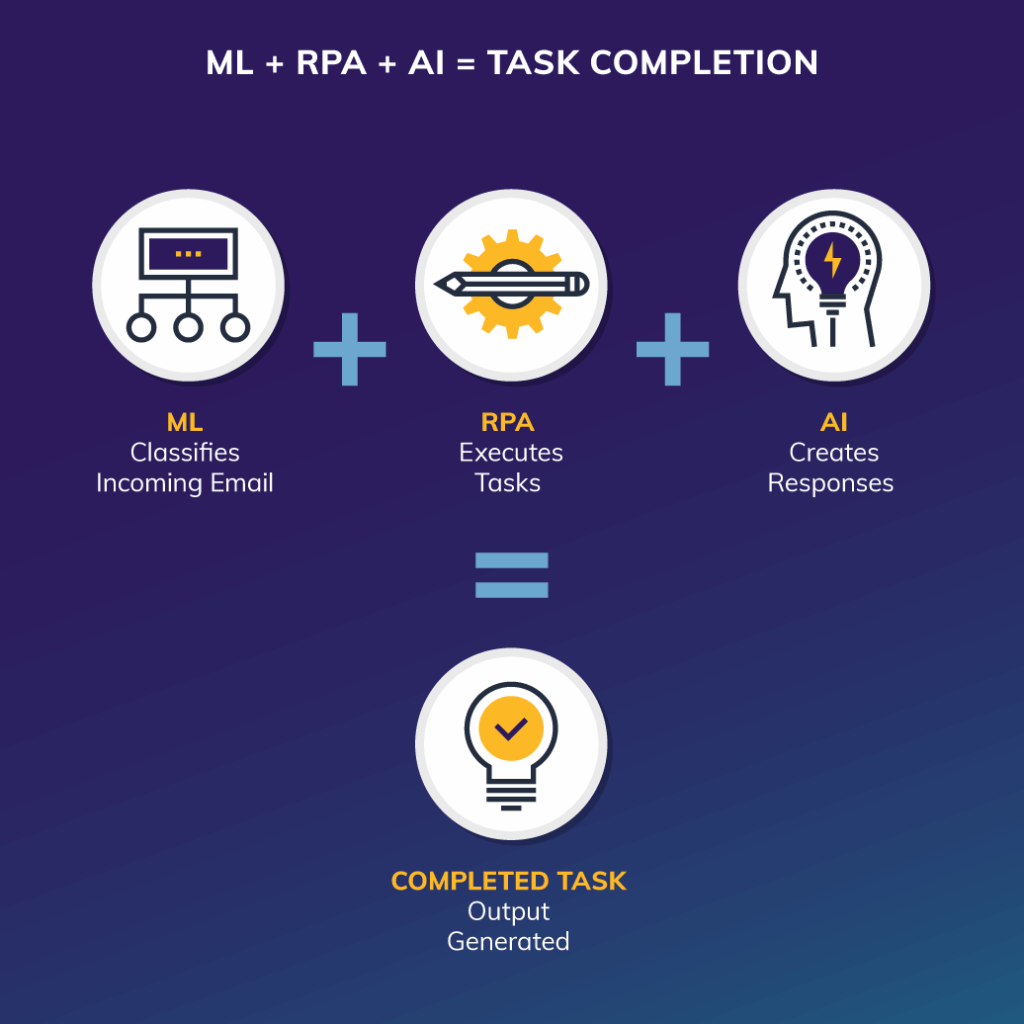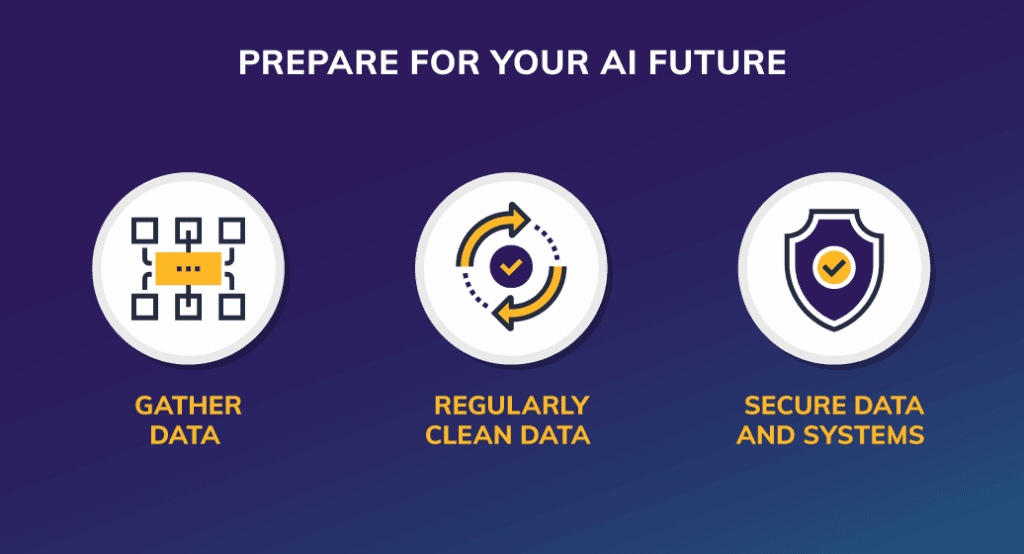Tools that use AI and real-time data streaming improve automation in manufacturing to keep your plants running efficiently, with dynamic scheduling, smarter automation, and strategic decision-making for enhanced efficiency and agility.
In brief:
- Automation in manufacturing is evolving with AI integration and real-time data streaming, driving smarter scheduling and efficiency.
- Generative AI, SLMs and AI agents enable complex reasoning and end-to-end automation, surpassing the capabilities of traditional machine learning and RPA.
- AI optimizes production flow by recalculating schedules in real time, improving coordination and responsiveness.
- Success with AI requires consolidated, clean data and strong security for operational technology.
Whether your business produces cars, farm equipment, or beverages, using AI for automation in manufacturing can help you use streaming data in the same way that your car’s GPS does — constantly monitoring the conditions ahead to keep you on the most efficient route to your destination.
And like your trusty GPS, manufacturing automation tools never get tired of recalculating to keep your factory floor on track.
Imagine a production schedule that could automatically chart a new course if a machine fails to perform, you have an unexpected material shortage, or an operator calls in sick. By specifying which planning parameters are the most important to you, your AI-guided scheduling system could automatically maximize your labor force or make other adjustments to complete the orders by the promised dates.
In this blog, I’ll explore how AI applications in manufacturing, especially those that use small language models (SLMs) or AI agents, can transform any manufacturing process as easily as GPS can determine your best route. But first, I’ll provide some context based on my earlier writings about AI in manufacturing.
A Short History of Automation in Manufacturing
Automation in manufacturing is nothing new. In fact, since the start of the Industrial Revolution and the development of assembly lines pioneered by Henry Ford, leaders have been seeking new ways of working and technologies that can automate — or at least speed up — manual processes.
Naturally, efficiency and cost control were the key drivers behind those innovations. In recent decades, machine learning, robotics process automation, and their combinations have enabled manufacturers to automate routine, rules-based processes.
Each of these technologies plays a specific role in automations. For example, machine learning, which programs itself using the outputs of its own data analysis, does not require an understanding of unstructured content, such as images, to complete tasks like predicting product demand.
RPA, on the other hand, is great for rule-based, repetitive tasks that require copying data between systems. Using clear, if-then logic, it can use product demand information from the ML system to make automated adjustments to factory output. This example is hyperautomation — the combination of ML and RPA to automate a larger task, such as scaling production up or down based on data.
The drawback of all three types of automation is their inability to perform complex reasoning. That’s where generative AI comes in. GenAI can use natural-language prompts to create new outputs, such as product designs or new code for manufacturing processes. Unlike ML or RPA, its training needs are minimal, and it can process text, images or documents.
Putting It All Together
To see how these tools work together, imagine your company receives an order via email.
A trained ML model can use pattern recognition to analyze the email’s metadata and content and classify it into a bucket, such as “new order.” RPA can then step in to execute rules-based tasks, such as creating a support ticket.
GenAI’s contribution is to extract key data from the message’s content, such as the customer’s name, account number, and the customer’s specific request. It can also summarize the message and even perform sentiment analysis. For example, if the customer’s language expresses frustration, that email can be identified for more personal follow-up.
This blend of ML, RPA and GenAI is the latest evolution of manufacturing efficiency and operational excellence. It’s the technology that powers your GPS and the real-life manufacturing use case I’ll discuss below.
We still don’t know exactly where these innovations will go in the future, but the most important thing to remember is that they are here now — and your competitors may already be using them.
AI and Automation in Manufacturing: A Case Study
Recently, I worked with a manufacturer who conducted bulk mixing operations in tanks on the factory’s mezzanine level. Below the tanks, on the ground floor, operators would fill containers of various sizes with the contents from the tanks above.
The production manager spent more than an hour each day preparing a coordinated production schedule for the operators to follow. The daily schedule took into account customer orders, mix cycle times, tank requirements, product mixes that could run consecutively without cleaning, environmental conditions, and other factors.
However, during production operations, the timing of the tank filling stayed in flux. The process of adding raw materials frequently took longer than expected for various reasons.
Maybe the operator was busy adding materials to a different tank, or the forklift was in use at another tank, or the humidity was higher than expected. Whatever the case, if you watched the upstairs operators, they were swamped moving raw materials around and filling the tanks — but were they filling them the most efficient way to optimize the overall product flow?
Meanwhile, the downstairs operators didn’t know which tank would finish mixing first or even when. They stayed busy preparing to fill containers at every tank, applying labels, setting up filling stands, and so on. But at times, they would be caught off guard when one tank finished mixing while they were all set to fill a different tank.
Now, they could do a better job of communicating between the mixing and filling operations, but that wouldn’t fix the underlying problem: They had not optimized the production flow.
This issue presented a perfect opportunity to implement AI. They already had a supervisory control and data acquisition (SCADA) system connected to all the tanks to monitor the mixing parameters and product recipes. They needed three more pieces of information to begin demonstrating the benefits of real-time data monitoring in manufacturing:
- Current Production Orders: the list of what the operators need to make and when
- Historical Performance: as much past SCADA data as possible
- External Factor Inputs: because the SCADA system did not have much interface with the filling operation, the manufacturer needed more data about that part of the process, as well as other factors, such as the number of available operators, humidity, and so on
With this information and real-time data streaming, AI could then “recalculate” the production schedule throughout the day to ensure the overall flow remained as efficient as possible. With upstairs production optimized, the downstairs operators could prepare the filling setup at the first tank that would be ready for use. As the day progressed, upstairs and downstairs could continue working better together.
Additional Use Cases for Automation in Manufacturing
What else could you do with this data and an AI system? The sky is the limit, because AI applications in manufacturing extend beyond simply scheduling. Below are a few possible use cases:
- Scenario Testing: You can ask AI to analyze various scenarios, such as adding additional shifts or fixing one piece of equipment before another.
- Predictive Maintenance: AI can use data like vibration, temperature or pressure to avoid unexpected downtime and maintenance costs.
- Quality Inspection: AI-enabled cameras using computer vision can identify products on the line that have damage, missing parts, or other quality issues.
- Demand Forecasting: Using historical sales data, market trends, and weather, economic, or other data, AI can better match your production with anticipated market needs.
So, the next time you enter your destination into your navigation system, consider how beneficial it would be to have a similar tool to manage the production scheduling for your operations — especially one that never gets tired of “recalculating.”
SLMs, AI Agents, and the Roads Ahead
As impressive as my client’s experience is, two additional innovations can significantly enhance it.
The first is small language models, or SLMs. Compared to the large language models (LLMs) that power AI tools like Microsoft Copilot, SLMs are even better for manufacturing operations because they can run on-premise (on-prem) with no cloud connection. While they have been around for a while, more companies are realizing the capabilities of these systems to handle just-off-the-floor, real-time data, enabling even more timely actions.
“That makes them great for processing sensor data, generating maintenance alerts, and creating work orders,” said Centric Consulting AI Strategy Director Joseph Ours. “They can also analyze vibration patterns, temperature fluctuations, and performance metrics — all within the computational constraints of industrial IoT devices.”
AI agents, the second innovation, are like your own digital workers, who can collaborate to complete tasks. Unlike chatbots, AI agents operate on predefined protocols that give them decision-making capabilities, autonomy, the ability to integrate with outside data sources, problem-solving skills, and the ability to complete tasks from beginning to end.
That means these tools, combined, bring us closer to the Holy Grail: end-to-end enterprise automation. For example, AI agents could make decisions about which parts to order, place and track customer orders, and update your inventory without human prompting.
Despite these amazing advantages, the future will also require LLMs for more strategic-planning tasks, working alongside SLMs for managing the details of how those tasks are completed, and AI agents for making well-researched, data-backed decisions. Together, these tools paint a bright future for using AI in manufacturing.
Preparing for Your AI-Enabled Automation Future
Sounds fantastic, doesn’t it? It is, but you’ll need to do some work before you can start integrating AI tools into your manufacturing processes.
The first task is to gather your data in one place. As great as these AI systems are, they will struggle to deliver their full potential if your data lives in legacy systems or silos across your organization.
One of the best ways to accomplish this is with a data lake. You can think of a data lake as a reservoir for data. The data lake stores all your data in one place until someone “turns on the tap” to take out what they need at the moment they need it.
Of course, a data lake will be much more effective if your data is not full of redundancies, obsolete records, or trivial information — in other words, if it’s not full of ROT! That means investing in a comprehensive and continual data cleansing program. After all, because ML, RPA and AI learn from the data available to them, minor errors can quickly snowball into data disasters that can bring production to a halt.
The good news? Today, AI can automate your processes for cleaning data or preparing it for a data lake, too. We also have tools such as Power BI available for building dashboards to monitor these systems, allowing you to track activities on your factory’s floor.
Last, don’t forget security. Your operational technology (OT) network must be as secure as your collaboration tools, information networks, and financial records. A robust AI security plan to keep bad actors out of your AI-powered automation systems and keep your proprietary data secure on your property should include:
- Strategies for communicating the importance of security across your company
- Solid guardrails and governance policies
- AI incident and disaster recovery plans
The Future is AI Automation in Manufacturing
Just as your GPS recalculates in real-time to keep you on track, AI systems can dynamically recalculate to adjust production schedules, anticipate disruptions, and optimize workflows across your factory floor.
But those improvements are not limited to efficiency. Instead, they point to a future of faster and more intelligent decision-making that can transform your shop from reactive automation to proactive orchestration.
By embracing this shift, you can gain a strategic edge in a competitive landscape. The technology has already pulled up. Are you ready to change course?
Our Operational Excellence team works to create scalable, flexible solutions centered on your business needs. Interested in working together to improve your manufacturing processes? Let’s Talk






